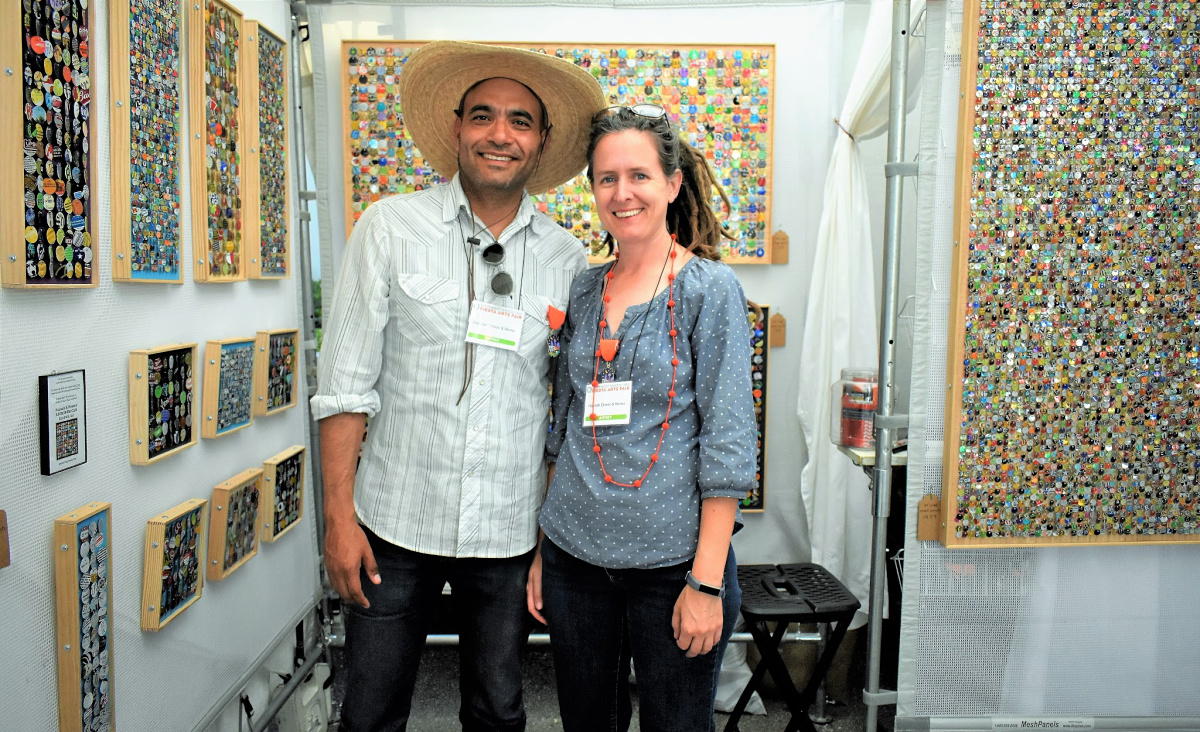
Skillfully cutting found aluminum cans into sequin-like disks and positioning them in beautiful art doesn’t sound easy. Make that art about four feet wide and construct it in the back of a van, and you’ve got yourself a whole new challenge. That’s what Hannah Dreiss and Nemo do when they create their Recycled Aluminum Moving Mosaics. When they’re not using their van as a studio, they’re literally taking the show on the road. They travel with their pieces from art show to art show, calling their van/studio home sweet home along the way. Read on to find out how cans became their main medium, how cancer brought them closer together, and how their favorite things about #vanlife.
Recycled Aluminum Moving Mosaic | UncommonGoods
What inspired you to start making artwork with aluminum cans?
Many years ago Hannah wanted to create some new art pieces that could be donated to an animal rescue organization fundraiser. Looking around at our art supplies, she just wasn’t feeling inspired by the usual paints and canvas or pencil and paper that Nemo was working with at the time. We had a couple of empty Lone Star Beer cans that caught her eye because of their interesting graphic design, so she started to cut them up and experiment with them until she had created two pieces, one with a dog theme and one with a cat theme. They were some of the first pieces to sell at the fundraiser, so that definitely got her hooked on the material, and bonus – it’s art supply budget friendly!
You both worked in architecture for quite a while. How’d you decide to team up and start making your mosaics full-time instead?
Architecture was a wonderful field to be a part of, but around 2008, it became less and less interesting to us both, as the creative aspect of new construction began to be replaced by existing construction assessments, boring spreadsheets, and threats of major layoffs. We both longed to get out of our cubicles, express our creativity, and see the country. Nemo had already established himself as a part-time artist working in pencil on paper, so he created a new body of work, we quit our jobs, bought a camper van, and applied to as many art festivals as we could!
Then, after the first two years of life on the road, we hit a big hurdle – Hannah’s cancer diagnosis. It happened right in the middle of the busy summer season and required the cancellation of 10 art shows. Hannah required three surgeries and several months of rest before we could get back on the road. During that time, we both reignited our interest in working with aluminum cans. It’s like being “down and out” allowed us to not stress about selling art, but instead just create. Hannah was too weak to work, but she guided Nemo in the technique she had created so many years ago, and talked him though every step in the process of making a moving mosaic. By the time Hannah was back on her feet, Nemo had created six large aluminum can pieces – enough to show at small local art event.
“Architecture was a wonderful field to be a part of, but around 2008, it became less and less interesting to us both…We both longed to get out of our cubicles, express our creativity, and see the country.”
You live (and work) together in a van. What’s it like making art in such a small space?
It’s definitely a challenge! We have really learned to work within certain limits. When traveling between shows, we will work for several hours and then we must put away all tools, supplies, and works in progress, before we move the van or else it will all end up on the floor while driving. We are also limited on the sizes we can make because our workspace is only so big. The largest pieces we can comfortably make in the van are 24”x 48”, so if we want to go bigger we need a picnic table and good weather, or to borrow another artist’s studio space.
Another consideration is how many tools and supplies we need and what quantity will fit in the van with us. Everything we have, including art, supplies, food, clothing, and housewares, must be absolutely necessary and preferably small in scale and lightweight. An unavoidable aspect of art show life is owning and carting around the 10’x10’ canopy and display walls for the festivals. That canopy and our entire finished art inventory are strategically stacked under our bed, accessible through our van’s back double doors. Nemo is a master at playing Tetris every other weekend!
Describe your process for us a little. Do you go into each piece with a finished product in mind, or do you “wing it” a little?
The first part of our process is collecting the cans. It’s actually the longest stage because we are aiming for the largest amount of variety of punches. We’d estimate that some of our larger pieces represent a couple of years’ worth of can collecting. We mainly get our cans by intercepting them before they end up in a garbage can destined for the landfill. Friends and relatives who have a strong understanding of what we are looking for in a can will save them for us, and we have no problem walking up to a stranger with a cool can and asking if we can have it when they’re finished. But we have found the best source to be other traveling artist friends who are very adventurous with their choice of drink! A common joke among our beer drinking friends is that just because the label is pretty doesn’t mean it tastes good!
After collecting, we clean the cans, then cut them up, and flatten them out. We end up with rectangles of aluminum that can be stacked and filed easily by color or brand order. From there we make selections of various cans with different colors and graphics and begin punching the initial main discs one at a time. Once we’ve filled a jar we start on the second step, which is punching the nail hole, which we can do five at a time. We also spend time cutting, painting and gridding boards, to which we later nail the discs one by one with a hammer. We take special care to line them up and get them the right height to allow for movement of the discs. All of these parts of our process are usually at various stages happening all at once!
“We have found the best source [of usable cans] to be other traveling artist friends who are very adventurous with their choice of drink! A common joke among our beer drinking friends is that just because the label is pretty doesn’t mean it tastes good!”
Is there a special trinket or talisman you keep nearby while you work? If so, what is it and what does it mean to you?
We have never been superstitious people, but we have always possessed this aluminum cutout of a chicken (a religious Milagro charm) that has been with us since we got our first apartment together in San Antonio. Nemo found it one day out in the street and we have always had it on our front door in whatever house or apartment we have lived. Naturally we kept it when we moved into our van in 2010 and now it’s tucked in the corner of a window over our desk. Being that it is made of aluminum makes us wonder if it was once a beverage can at some point, either literally cut from one, as Milagros sometimes are, or possibly metal that once passed through a recycling plant? Either way, it’s always symbolized “home” for us!
If you showed one of your pieces to a kindergartner, what do you think they would say?
Kindergarteners have seen our work at both art festivals and school visits! Their reactions have been many things – from the irresistible need to grab it (while a parent disapproves), to the exclamation of “I love sequins!” to the thoughtful and inquisitive “What are these made of?” followed by the realization and look of astonishment. It’s funny, because writing this makes us realize that their reactions aren’t very different from adults!
“We have two main mantras. First is ‘Don’t fall victim to the curse of creativity.'”
Finally, what quote or mantra keeps you motivated?
We have two main mantras. First is “Don’t fall victim to the curse of creativity.” As artists, it’s very easy to veer off course with all the random ideas swirling around in our heads all the time. Many people call us lucky have so much bottled up creativity, but we have found that the more rabbit holes we go down, the more difficult it is for us to make a living. Our chosen art form is incredibly time consuming, which means we have to maintain focus on all aspects of being a professional “surviving and thriving” artist at all times. Even if it means letting go of great creative ideas along the way.
Our second mantra is “Check your perspective.” We know that art is subjective, and difficult to quantify, but when you are making your living as an artist, it’s easy to overanalyze situations, question your techniques, and compare yourself to the successes and failures of others. The reality is that we have to be both creative and business minded simultaneously, but everything is relative. The way one artist defines their own failure could be how another defines their own success. Therefore it becomes useless for us to dwell on the differences, and instead we look at our own lives through our own lens.
Shop Hannah & Nemo’s moving mosaics »
*This post was originally published November 7, 2018.

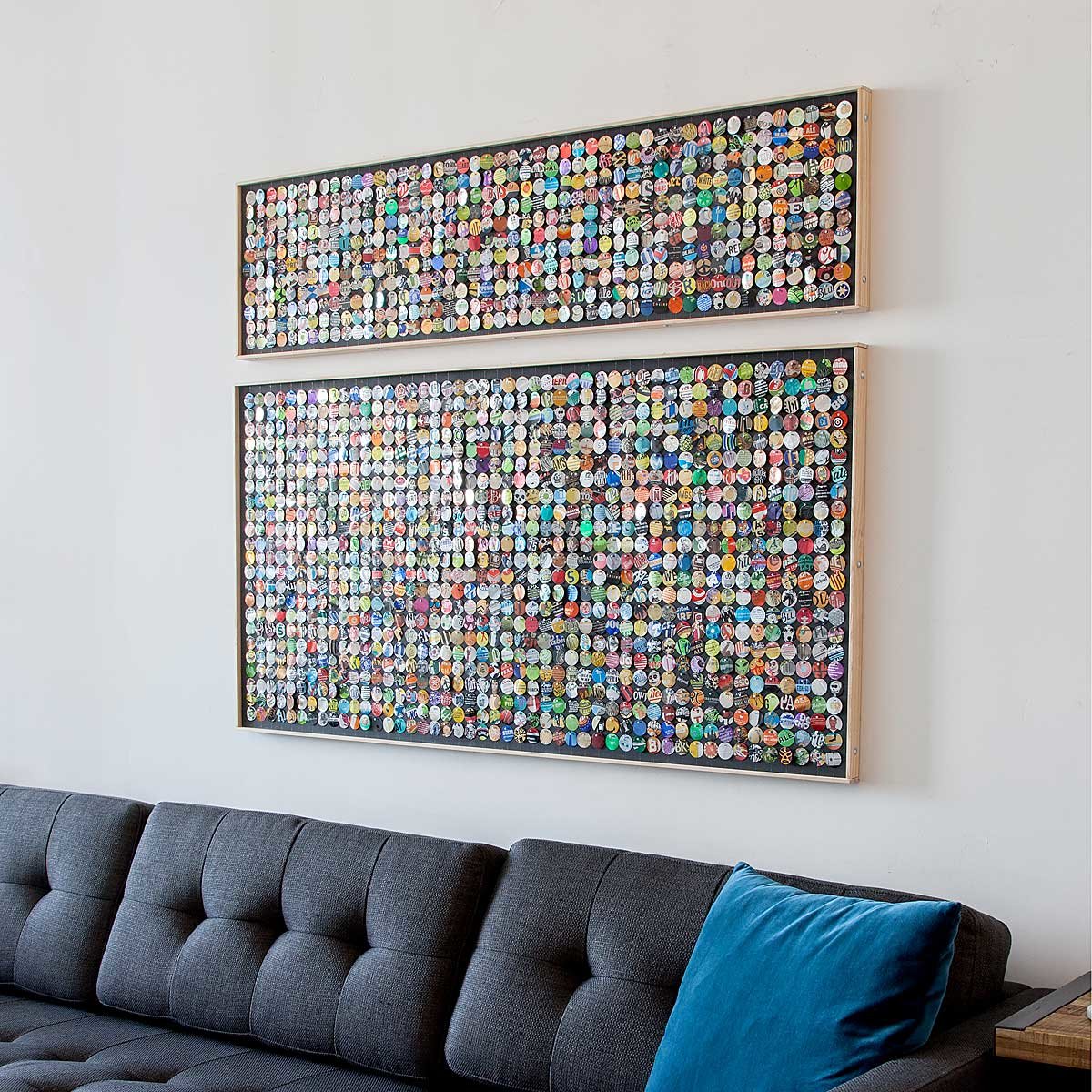
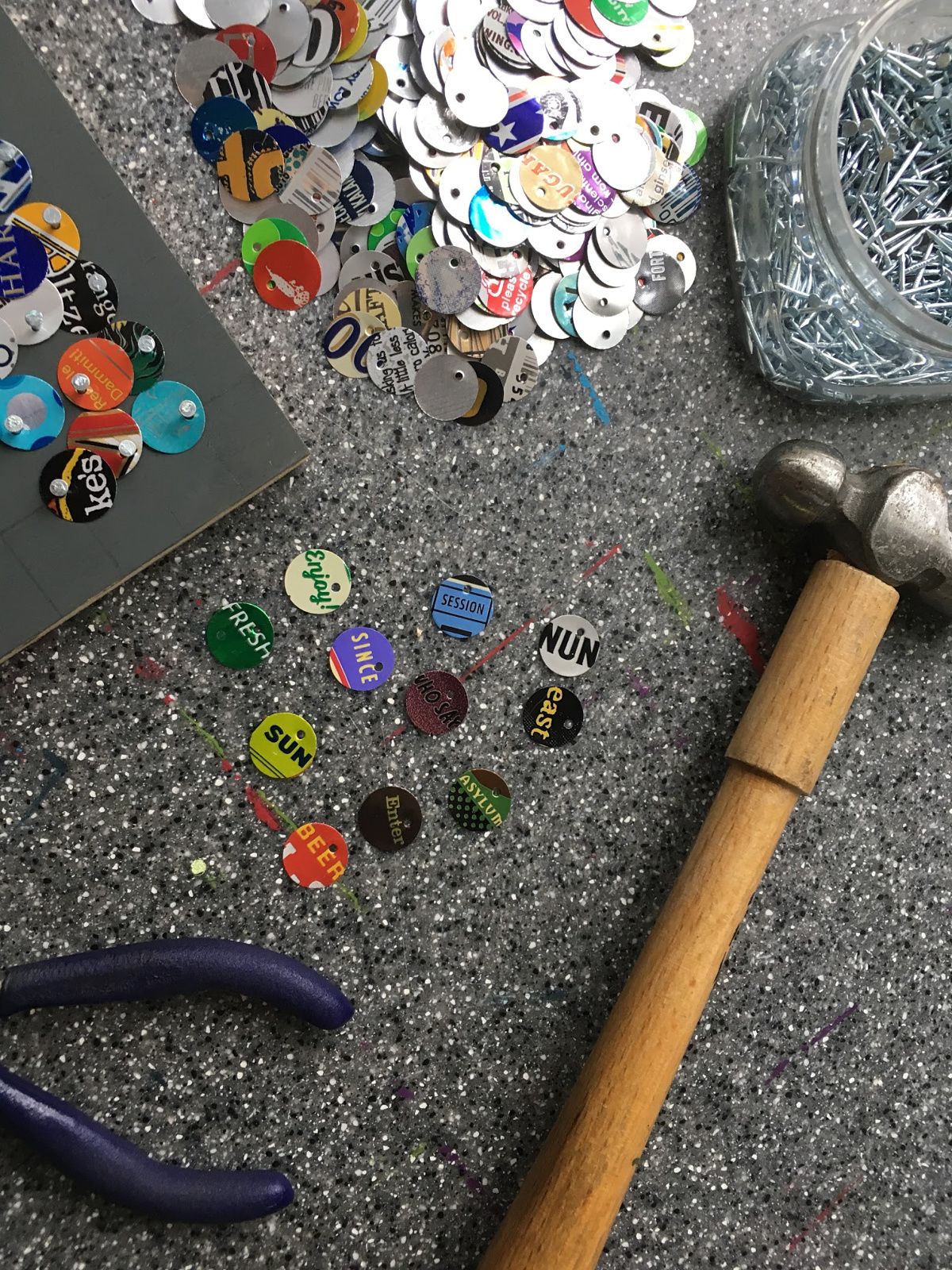
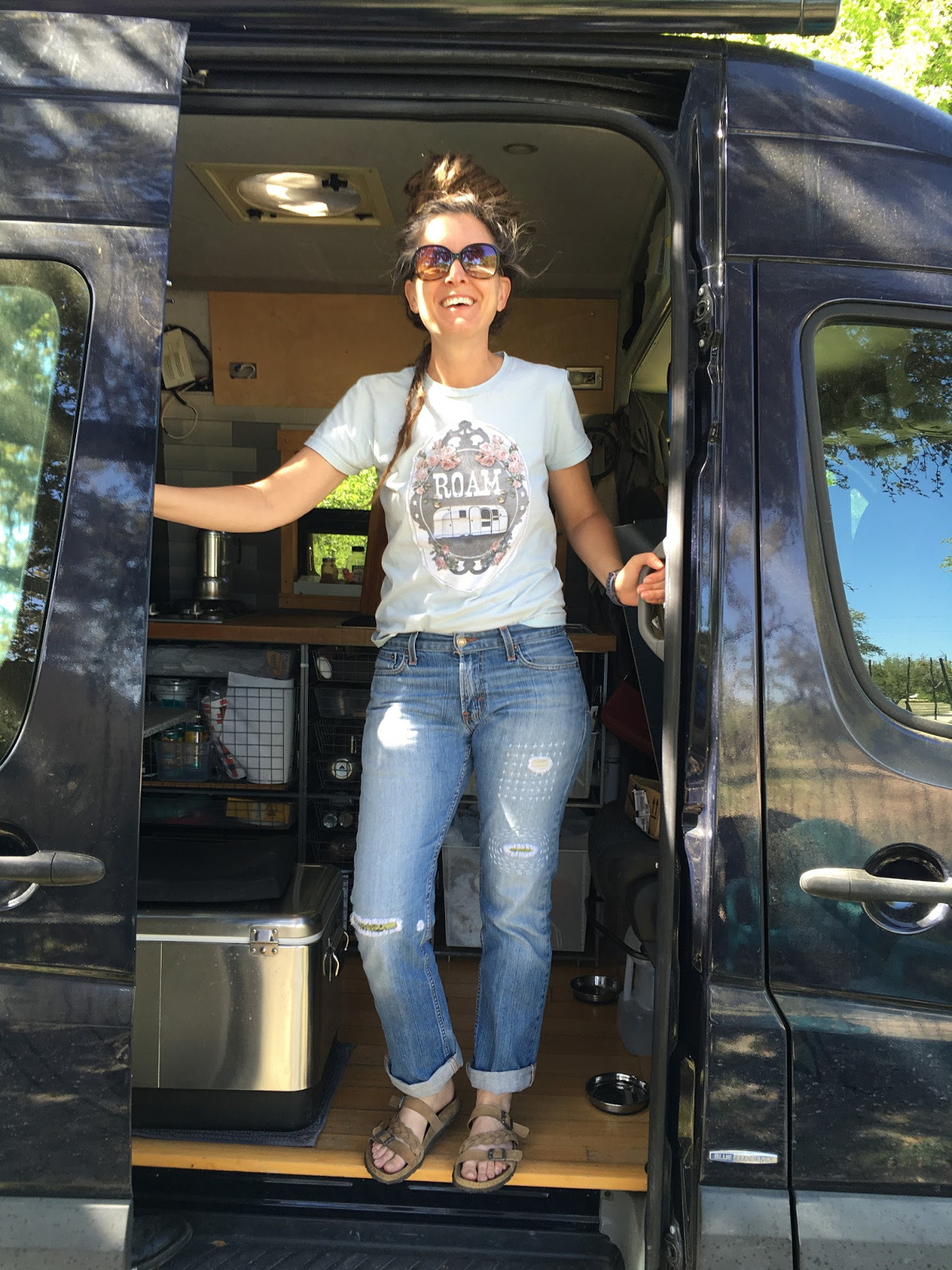
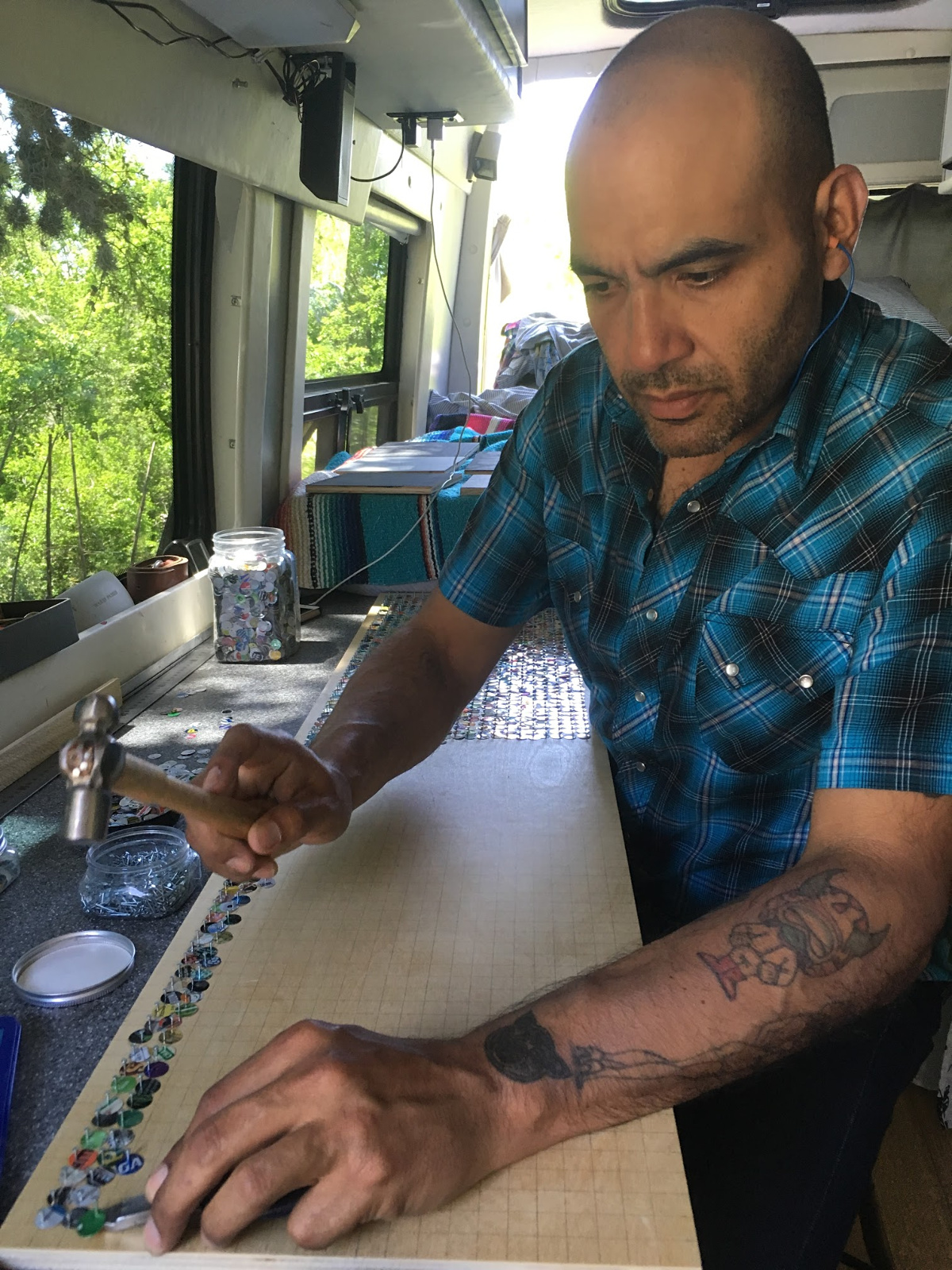
No Comments